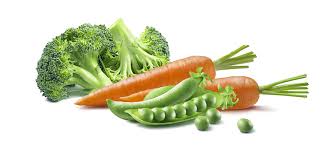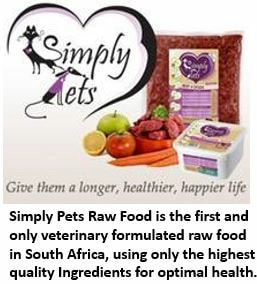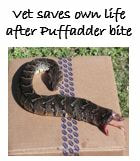Veggies for dogs - what you need to know
by Dr. Peter Dobias
wwwpeterdobias.com
(A brilliant website with so much info. a great blog, and several courses available, and one is on raw feeding)
by Dr. Peter Dobias
wwwpeterdobias.com
(A brilliant website with so much info. a great blog, and several courses available, and one is on raw feeding)

HOW TO MIX VEGGIES IN WITH YOUR DOG'S MEAT AND BONES
If you are feeding a raw diet, you may already know that the commonly followed ratio of meat, raw bones and veggies is 50/25/25. While I agree that this ratio works well for most dogs, many of you ask me what veggies and fruit to feed and which ones to avoid.
What do I recommend? Follow nature’s recipe!
LET'S START WITH FRUIT
I recommend that you give Fido only small amounts of fruit, (less than five percent) as dogs usually eat only small amounts of fruit in nature.
WHY ARE THERE TIME RESTRICTIONS?
Because protein takes longer to digest, if you feed fruit and protein together, fruit may start to ferment, creating alcohol. The next thing you know, your dog is “under the influence” staggering around the house.
On a more serious note, the most important reason is that fruit simply doesn’t digest as well with protein. On its own, fruit exits the stomach quickly. When you feed fruit with protein, it sits in the stomach much longer, which may create undesirable fermentation and a small amount of alcohol.
EAT YOUR VEGGIES AND GIVE YOUR DOG SOME TOO
Did your mom tell you to eat your veggies? Of course, she did, and you listened, didn’t you? If dogs had a choice, many of them would skip vegetables altogether because they are like kids. Skai doesn’t mind finely ground veggies. However, if I cut them in bigger chunks, he is a master at picking out the pieces and spitting them out.
One of the reasons why some dogs refuse to eat vegetables is because in natural settings wild canines eat plant material pre-digested. When you prepare your dog's veggies, I recommend using a food processor or a juicer to “predigest” or puree Fido’s veg. The other option is to purchase frozen finely ground veggies from a natural dog food store.
DOGS LIKE VEGGIES PRE-DIGESTED
If Martha Stewart or The Naked Chef are your kinds of people, read on. I have something very important to tell you about making veggies. It is simple. However, you have to know what you are doing...
If you are feeding a raw diet, you may already know that the commonly followed ratio of meat, raw bones and veggies is 50/25/25. While I agree that this ratio works well for most dogs, many of you ask me what veggies and fruit to feed and which ones to avoid.
What do I recommend? Follow nature’s recipe!
LET'S START WITH FRUIT
I recommend that you give Fido only small amounts of fruit, (less than five percent) as dogs usually eat only small amounts of fruit in nature.
- Feed fruit at least one hour before feeding meat or other proteins and a minimum of three hours after a protein meal
- Feed local and pesticide-free fruit whenever possible.
WHY ARE THERE TIME RESTRICTIONS?
Because protein takes longer to digest, if you feed fruit and protein together, fruit may start to ferment, creating alcohol. The next thing you know, your dog is “under the influence” staggering around the house.
On a more serious note, the most important reason is that fruit simply doesn’t digest as well with protein. On its own, fruit exits the stomach quickly. When you feed fruit with protein, it sits in the stomach much longer, which may create undesirable fermentation and a small amount of alcohol.
EAT YOUR VEGGIES AND GIVE YOUR DOG SOME TOO
Did your mom tell you to eat your veggies? Of course, she did, and you listened, didn’t you? If dogs had a choice, many of them would skip vegetables altogether because they are like kids. Skai doesn’t mind finely ground veggies. However, if I cut them in bigger chunks, he is a master at picking out the pieces and spitting them out.
One of the reasons why some dogs refuse to eat vegetables is because in natural settings wild canines eat plant material pre-digested. When you prepare your dog's veggies, I recommend using a food processor or a juicer to “predigest” or puree Fido’s veg. The other option is to purchase frozen finely ground veggies from a natural dog food store.
DOGS LIKE VEGGIES PRE-DIGESTED
If Martha Stewart or The Naked Chef are your kinds of people, read on. I have something very important to tell you about making veggies. It is simple. However, you have to know what you are doing...
|
TIPS FOR PREPARING VEGGIES
The diet of all canines should contain about 25 percent veggies, 25 percent bone and 50 percent meat (and five percent is varied organ meat.) This doesn’t mean you have to give the same amount of vegetables every day. Let's say it should be 25 percent over a longer period of time. One day less, one day more, it doesn’t really matter. I usually feed about the same amount that I add to ground or chunky meat. With a bone-based meal, I give no veggies. NO NIGHTSHADE FAMILY There is a lot of anecdotal evidence that dogs |
do not do well on tomatoes, potatoes, peppers, and eggplant - the nightshade family.
Unless someone does further research, we are left to claims that these veggies and dogs do not do well together. While I haven’t seen any practical evidence of dogs getting poisoned by tomatoes or their “cousins”, the leaves of these plants are definitely toxic.
BROCCOLI, CABBAGE OR CAULIFLOWER MYTH OR REALITY?
Some sources claim that the cruciferous family may increase the chances of hypothyroidism - a condition represented by low thyroid gland hormone. We also call these plants goitrogenic. I must confess that I have tried to stay away from these when feeding Skai, only because I am not sure if these claims are valid or not. I would love to hear from anyone who knows of a study confirming this claim.
I recommend either staying away from these veggies or feeding them in small quantities. Once again, when you are unsure, go with the lowest possible risk. There are plenty of other vegetables that are definitely safe.
CARROTS ARE NOT IDEAL
For some reason, dogs do not have a good ability to digest carrots, especially if they are coarsely grated or in chunks. Some sources are also concerned about the levels of sugar in carrots. There is a simple way to see if your dog can digest carrots. Just feed them in chunks and see if you find carrots in your dog’s bowel movement.
AVOID ONIONS
Onions are known to be toxic to dogs and can cause red blood cell damage and anemia. Some people claim that garlic should also be avoided. However, my experience is that small amounts of garlic cause no issues.
GREENS AND SWEET VEGGIES, PLEASE!
Now that you know that dogs are designed for pre-digested veggies, it is important to know what to throw in the food processor. Let's start with the 50/50 formula. Curious? Read on.
At least 50 percent of your dog's veggies should be green leaves.
Leafy veggies resemble grasses and other greens that wild prey eat. Greens also have numerous health benefits. They are vitamin powerhouses, full of antioxidants and minerals. They also possess cleansing and pH balancing properties and are an excellent source of fiber. Good examples are lettuces, dandelion leaves, parsley, cilantro, basil, beet tops, carrot tops, kale, sprouted seeds, etc.
The remaining 50 percent of the vegetable blend should consist of sweet veggies that are not leafy, and this group consists of zucchini, celery, green beans, green peas, red beets, orange fleshed sweet potatoes (often referred to as yams in North America) and other carbohydrate-rich vegetables.
If you are buying pre-made meat and would like to make veggies at home, here is a simple formula:
50 percent green leafy veggies and 50 percent sweet veggies mixed.
SUPPLEMENTS TO FILL IN THE GAPS
No matter if you feed organic or non-organic veggies, nutrients, especially mineral depletion, is highly likely without additional all-natural supplements. Here is what you can do:
Unless someone does further research, we are left to claims that these veggies and dogs do not do well together. While I haven’t seen any practical evidence of dogs getting poisoned by tomatoes or their “cousins”, the leaves of these plants are definitely toxic.
BROCCOLI, CABBAGE OR CAULIFLOWER MYTH OR REALITY?
Some sources claim that the cruciferous family may increase the chances of hypothyroidism - a condition represented by low thyroid gland hormone. We also call these plants goitrogenic. I must confess that I have tried to stay away from these when feeding Skai, only because I am not sure if these claims are valid or not. I would love to hear from anyone who knows of a study confirming this claim.
I recommend either staying away from these veggies or feeding them in small quantities. Once again, when you are unsure, go with the lowest possible risk. There are plenty of other vegetables that are definitely safe.
CARROTS ARE NOT IDEAL
For some reason, dogs do not have a good ability to digest carrots, especially if they are coarsely grated or in chunks. Some sources are also concerned about the levels of sugar in carrots. There is a simple way to see if your dog can digest carrots. Just feed them in chunks and see if you find carrots in your dog’s bowel movement.
AVOID ONIONS
Onions are known to be toxic to dogs and can cause red blood cell damage and anemia. Some people claim that garlic should also be avoided. However, my experience is that small amounts of garlic cause no issues.
GREENS AND SWEET VEGGIES, PLEASE!
Now that you know that dogs are designed for pre-digested veggies, it is important to know what to throw in the food processor. Let's start with the 50/50 formula. Curious? Read on.
At least 50 percent of your dog's veggies should be green leaves.
Leafy veggies resemble grasses and other greens that wild prey eat. Greens also have numerous health benefits. They are vitamin powerhouses, full of antioxidants and minerals. They also possess cleansing and pH balancing properties and are an excellent source of fiber. Good examples are lettuces, dandelion leaves, parsley, cilantro, basil, beet tops, carrot tops, kale, sprouted seeds, etc.
The remaining 50 percent of the vegetable blend should consist of sweet veggies that are not leafy, and this group consists of zucchini, celery, green beans, green peas, red beets, orange fleshed sweet potatoes (often referred to as yams in North America) and other carbohydrate-rich vegetables.
If you are buying pre-made meat and would like to make veggies at home, here is a simple formula:
50 percent green leafy veggies and 50 percent sweet veggies mixed.
SUPPLEMENTS TO FILL IN THE GAPS
No matter if you feed organic or non-organic veggies, nutrients, especially mineral depletion, is highly likely without additional all-natural supplements. Here is what you can do:
- Find out what is your dog missing by getting a HairQ Test done
- Supplement all-natural, plant-based minerals such as GreenMin
- Add all natural, certified organic multi-vitamin such as SoulFood
- Include an organic probiotic digestive formula such as GutSense
- Other beneficial supplements are omega oils
|
Being chased by a dog, especially when acting aggressively is not a nice experience! Here are some tips to help if you find yourself in this situation.
|
Dogs who never give any warning before behaving aggressively are the most frightening and potentially dangerous.
|
An amazing story of how a vet saved her own life after a bit from a Puffadder.
|






